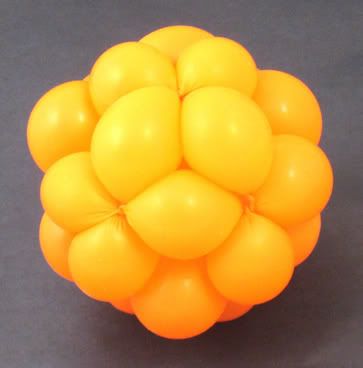And no one bothers to ask or define ... what the hell is Poincare's conjecture??

For compact 2-dimensional surfaces without boundary, if every loop can be continuously tightened to a point, then the surface is topologically homeomorphic to a 2-sphere, usually just called a sphere. The Poincaré conjecture asserts that the same is true for 3-dimensional surfaces.
(Like .. I even understand THAT !!?!!)
I wondered the same thing, so I went looking. This was one explanation that I thought was understanble, somewhat:
A proposition in topology put forward by Henri Poincaré in 1904. Poincaré was led to make his conjecture during his pioneering work in topology, the mathematical study of the properties of objects that stay unchanged when the objects are stretched or bent. In loose terms, the conjecture is that every three-dimensional object that has a set of sphere-like properties (i.e., is topologically equivalent to a sphere) can be stretched or squeezed until it is a three-dimensional sphere (a 3-sphere) without tearing (i.e., making a hole) it. Strictly speaking, the conjecture says that every closed, simply-connected three-manifold is homeomorphic to the three-sphere.
Poincaré proved the two-dimensional case and he guessed that the principle would hold in three dimensions. Determining if the Poincaré conjecture is correct has been widely judged the most important outstanding problem in topology – so important that, in 2000, the Clay Mathematics Institute in Boston named it as one of seven Millennium Prize Problems and offered a $1 million prize for its solution. Since the 1960s, mathematicians have shown by various means that the generalized conjecture is true for all dimensions higher than three – the four-dimensional case finally falling in 1982. But none of these strategies work in three dimensions. On Apr. 7, 2002 came reports that the Poincaré conjecture might have been proved by Martin Dunwoody of Southampton University, but within a few days a fatal flaw was found in his proof. Then, in April 2003, what appears to be a genuine breakthrough emerged during a series of lectures delivered at the Massachusetts Institute of Technology by the Russian mathematician Grigori Perelman of the Steklov Institute of Mathematics (part of the Russian Academy of Sciences in St. Petersburg). His lectures, entitled "Ricci Flow and Geometrization of Three-Manifolds," constituted Perelman's first public discussion of important results contained in two earlier preprints. Mathematicians will now scrutinize the validity of Perelman's work (which does not actually mention the Poincaré conjecture by name). In any event, the Clay Institute calls for a two-year cooling-off period is required before the prize can be awarded.
manifold A mathematical object that, in geometrical terms, is nearly "flat" on a small scale (though on a larger scale it may bend and twist into exotic and intricate forms). More precisely, a manifold is a topological space that looks locally like ordinary Euclidean space. Every manifold has a dimension, which is the number of coordinates needed to specify it in the local coordinate system. A circle, although curved through two dimensions, is an example of a one-dimensional manifold, or one-manifold. A close-up view reveals that any small segment of the circle is practically indistinguishable from a straight line. Similarly, a sphere's two-dimensional surface, even though it curves through three dimensions, is an example of a two-manifold. Seen locally, the surface, like that of a small portion of the Earth, appears flat. A manifold that is smooth enough to have locally well-defined directions is said to be differentiable. If it has enough structure to enable lengths and angles to be measured, then it is called a Riemannian manifold. Differentiable manifolds are used in mathematics to describe geometrical objects, and are also the most natural and general settings in which to study differentiability. In physics, differentiable manifolds serve as the phase space in classical mechanics, while four dimensional pseudo-Riemannian manifolds are used to model spacetime in general relativity.
homeomorphic In topology, two objects are said to be homeomorphic if they can be smoothly deformed into each other.

